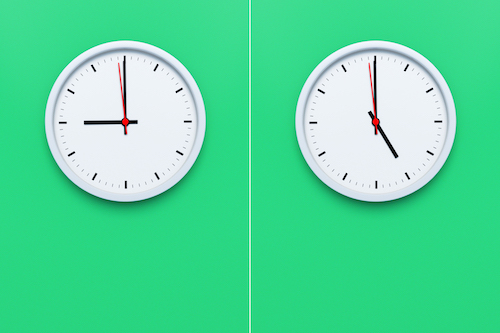More than half of U.S. employees are unhappy with their current salary. 75% of people trust content with data more than content without. Surveys can give you an incredible snapshot of insight into human preferences and behavior, but you need to be conscious of keeping that snapshot up to date.
Sentiments can change quickly, and if you’re using surveys to make strategic decisions, you need to keep up with the trends. Over the three years we’ve run our annual Fortune 500 survey, JP Morgan Chase went from the #1 “most influential” company, to #73, and then back up again.
Whether you’re asking employees about their sense of belonging, customers about their satisfaction with your product, or consumers what they think about your potential new logo, it’s often in your best interest to deploy the same survey multiple times. Doing so allows you to benchmark changes over time (are your customers getting happier?), maintain accurate results (do millennials still like Facebook?), and keep conversations open (what types of training do your employees crave?)
Once you’ve put in the work and created a survey you love, it’s at your disposal for as long as your account exists. Why not make the most of it?
Benchmark your progress or track changes over time

What does success look like for you? Benchmarking gives you a baseline read of your audience’s opinions to compare to over time so that you can evaluate the results of different strategies. Are your customers more satisfied with the service they’re getting? How did attendees perceive your most recent event, compared to your first one?
The number one thing you want to keep in mind when you’re benchmarking is consistency. Let’s say you’ve created a concept testing survey to see what consumers think about the different brand options for your new ice cream company. The response was...underwhelming—so you decide to test another one.
To get the clearest findings possible, make sure that the sample size and demographic distributions of the two surveys are similar. If the audiences are too different, it could skew your results. For example, teenagers might not feel as excited about naming a flavor “Whey Jude” as people who remember the 60’s might.
Benchmarking tip: If you’re not sure how to keep your demographics constant, SurveyMonkey Audience can help you access groups with the exact parameters you’re curious about.
Identify shifts in attitude or perception
But what if you don’t want to talk to different people? You’re curious about how the same group of people (maybe employees, or a set group of customers) change their opinions over time. That’s called a longitudinal study, and surveys can help you do that too.
Because you’re using the same group of people, smaller discrepancies in your results will be more statistically significant than if you were benchmarking. When the audience is consistent, any differences will be noteworthy. Depending on the type of survey you’re using, you can also create filters to compare differences over time.
Longitudinal study tip: When deciding the sample size for your longitudinal study, you have to think about how consistent you expect the responses to be. If you’re surveying employees and requiring them to respond, there’s a lot more certainty than if you’re doing customer or market research. A good rule of thumb is to select three times as many survey participants as you’ll need to make a decision from your results.
Replicate your results, and make a stronger case

A final reason that you might want to send the same survey again? Accuracy. Any scientist knows that the ability to consistently replicate results is the strongest way to prove a theory. Survey findings one time can be a good indicator of something, but similar findings across three different studies is a whole lot more convincing.
If you want to make an ironclad argument, redeploy your survey at different times of the day/month/year, among different demographics, and over different mediums. If your findings stay consistent, you have the proof you need to make your decision (or make your point.)
Whatever your reason, redeploying a survey with SurveyMonkey is quick and easy. You can use the same survey to generate a link to share, or make a copy if you’d prefer to keep your results separated.




